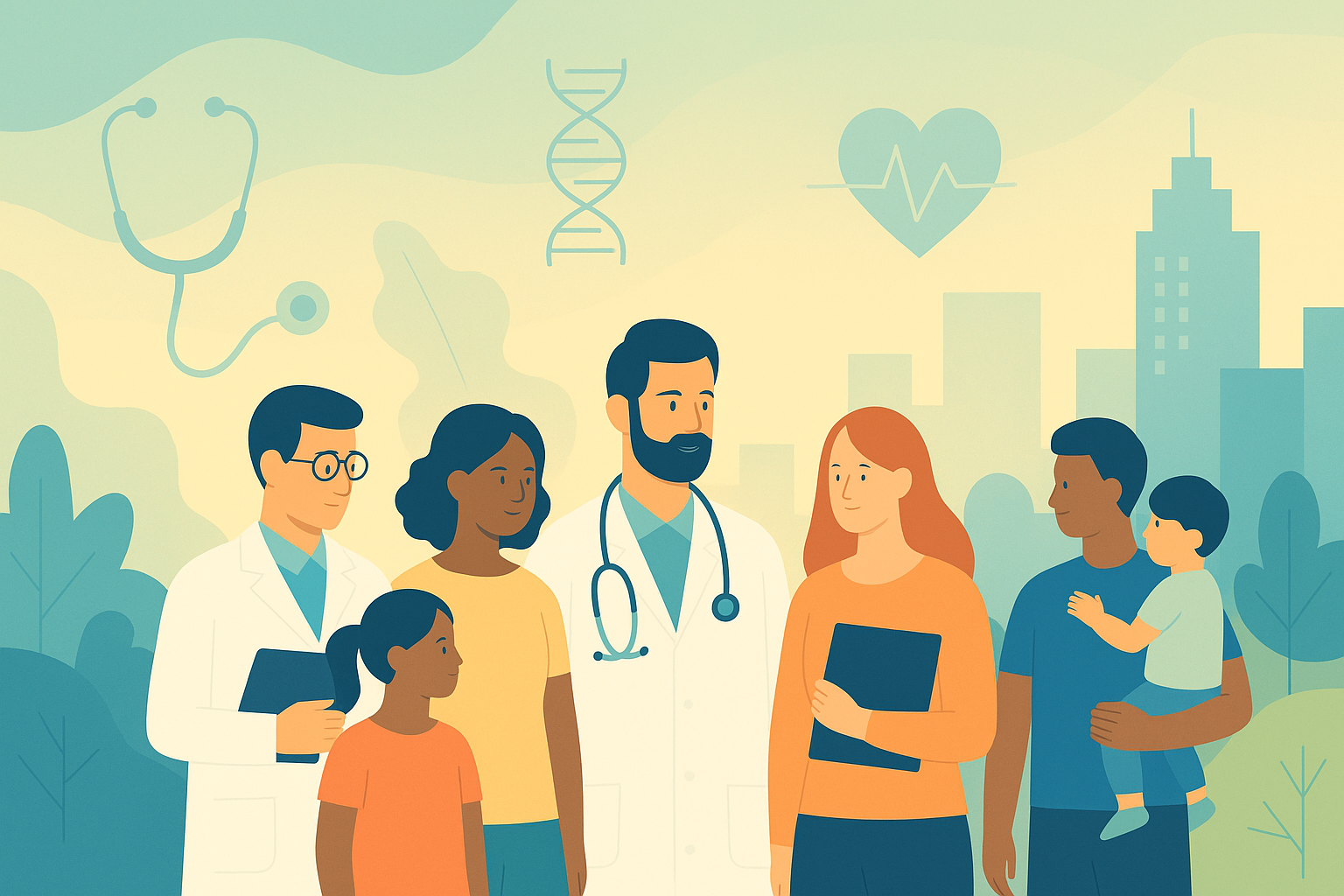
Racial Bias in Electronic Health Records
In the past few years, discussions about racial disparities in healthcare have grown louder. The COVID-19 pandemic not only highlighted these disparities but also emphasized how systemic racism continues to harm the health and well-being of racially marginalized communities. One important but often overlooked area where racial bias surfaces is in electronic health records (EHRs)—the digital files that follow patients throughout their healthcare journeys. A recent* study from an urban academic medical center in Chicago sheds light on how racially biased language in these records may exacerbate healthcare inequities.
This blog will break down the study’s findings and discuss their significance for public health practitioners, researchers, and healthcare providers. We’ll explore why this issue matters and what can be done to ensure that everyone receives fair, unbiased care.
The Hidden Language of Bias in Healthcare
If you’ve ever seen your medical records, you might think they’re just a dry, factual account of your health history. However, those notes often contain language that can convey a healthcare provider’s implicit biases. Implicit biases are unconscious attitudes or stereotypes that people hold about others based on factors like race, gender, or socioeconomic status. In the context of healthcare, these biases can show up in subtle ways, including how providers describe patients in their notes.
The Chicago-based study analyzed over 40,000 history and physical notes written between January 2019 and October 2020 for more than 18,000 patients. The researchers used machine learning to detect “negative descriptors” in the notes—words like “noncompliant,” “agitated,” or “resistant.” These are terms that can paint patients in an unflattering light and potentially affect how future healthcare providers view them.
So, what did the researchers find? Black patients were 2.54 times more likely than White patients to have at least one negative descriptor in their records, even after accounting for sociodemographic and health factors. This means that, regardless of their medical condition or background, Black patients were disproportionately labeled with terms that could stigmatize them and impact their care.
Why Does This Matter?
Imagine this: You’re a patient who sees a new doctor for the first time. The doctor reviews your medical record before your visit, and they see the words “noncompliant” or “resistant” in the notes from previous doctors. Whether or not those words accurately describe you, they might shape how your new doctor interacts with you. Maybe they assume you won’t follow their treatment plan. Maybe they spend less time explaining things to you because they think you won’t listen.
This might sound like a worst-case scenario, but it happens more often than we think. Research has shown that stigmatizing language can lead to less aggressive treatment plans and lower-quality care for patients who are labeled negatively. For Black patients, who already face significant healthcare disparities, these biases can deepen mistrust in the healthcare system and lead to poorer health outcomes.
The study’s findings also highlight the broader issue of systemic racism in healthcare. The use of biased language in medical records isn’t just about individual providers being unfair; it reflects a healthcare system that tolerates and even perpetuates these biases. If left unchecked, these biases can contribute to worse health outcomes for racially marginalized groups.
What Can Be Done?
Addressing racial bias in EHRs—and healthcare more broadly—is no small task, but it’s crucial for improving health equity. Here are a few actionable steps that public health practitioners, healthcare providers, and researchers can take:
1. Implement Bias Training for Healthcare Providers
One key recommendation from the study is to provide healthcare providers with training on how to recognize and address their own implicit biases. This includes teaching providers to use “people-first” language that avoids labeling patients by their health conditions or behaviors. For example, instead of calling someone “non-compliant,” providers could say, “The patient has experienced challenges following the treatment plan due to financial constraints.”
2. Encourage Patient-Centered Communication
The study found that outpatient encounters were associated with fewer negative descriptors than inpatient encounters. This might be because outpatient care often involves longer-term relationships between patients and providers, leading to more trust and understanding. Encouraging patient-centered communication—where providers take the time to listen to and understand patients’ needs—can help reduce the use of biased language and improve patient outcomes.
3. Promote Accountability Through OpenNotes
Many healthcare systems now use OpenNotes, a practice that allows patients to view their own medical records, including doctors’ notes. This transparency can encourage providers to be more mindful of the language they use, knowing that patients might read their notes. It can also give patients an opportunity to correct any inaccuracies or misconceptions in their records, which could help prevent biased language from being perpetuated.
4. Address Structural Issues in Healthcare
Finally, it’s important to recognize that bias doesn’t exist in a vacuum. The healthcare system itself contributes to the use of biased language by placing providers under time pressure, increasing their cognitive load, and creating stressful work environments—factors that can lead to the use of stereotypes as cognitive shortcuts. Addressing these structural issues, such as by reducing provider burnout, can help create a more equitable healthcare system for everyone.
Looking Forward
The findings from this study are a wake-up call for the healthcare community. The way providers describe patients in their records may seem like a small issue, but it has real-world consequences for patient care and health equity. As we continue to confront the legacies of racism in healthcare, addressing implicit bias in EHRs is one step we can take to create a more just and equitable healthcare system.
By implementing bias training, promoting patient-centered communication, and addressing structural issues in healthcare, we can reduce the use of stigmatizing language and ensure that all patients—regardless of their race or ethnicity—are treated with the respect and dignity they deserve.
Join the Conversation
What are your thoughts on addressing bias in healthcare? Have you ever encountered stigmatizing language in your medical records, or do you know someone who has? Share your experiences in the comments or on social media using the hashtag #HealthcareEquity.
Unlock Daily Public Health Updates!
Want real-time access to groundbreaking research? Sign up for our Public Health Article Feed and get daily updates summarized in clear language so you can stay on top of what matters most. Join now—science should be simple and accessible! Click below!



